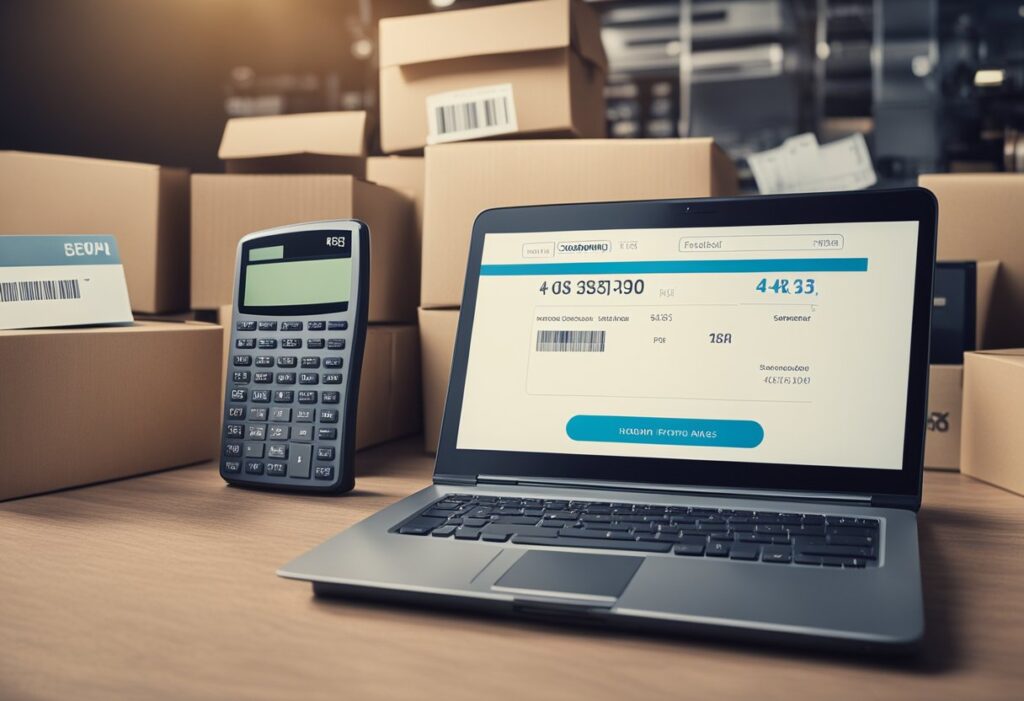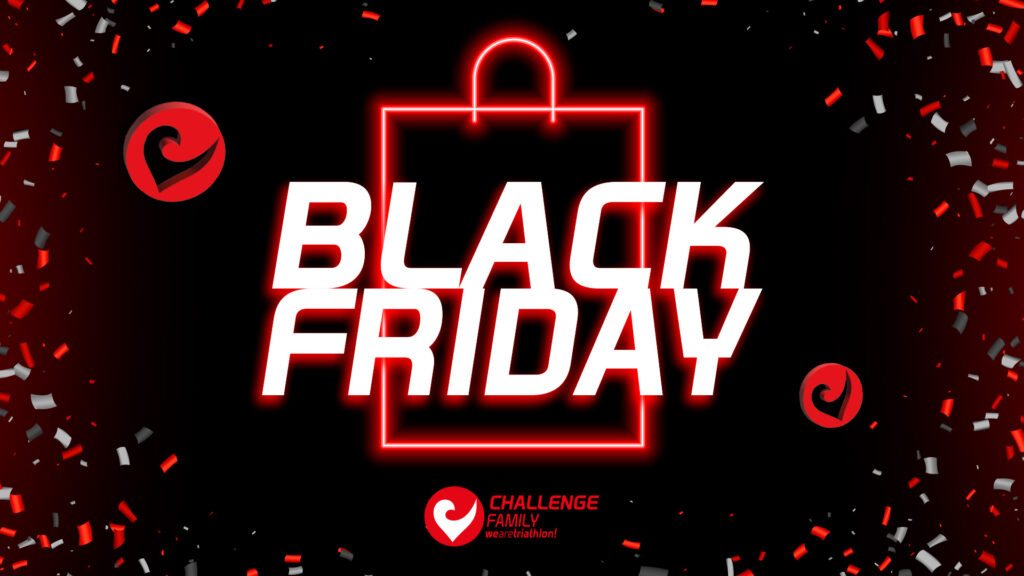Starting an ecommerce business presents an alluring opportunity for entrepreneurs. In the digital age, the cost of establishing an online store can be significantly lower than that of a traditional brick-and-mortar establishment. However, it’s important to understand the variety of expenses involved in creating and operating an ecommerce platform. These costs can range from website development and hosting to inventory management and marketing.

Determining the initial investment for launching an ecommerce project varies depending on several factors, such as the scale of the business, the choice of technology, and the marketing approach. For those considering entrepreneurship in the ecommerce space, the financial planning phase is crucial. It involves setting a budget for fixed and variable costs, which includes expenses like formalizing the business, acquiring a domain, and subscribing to ecommerce platforms or services.
A detailed analysis of the expenditures associated with starting an online store is essential for aspiring business owners. They must factor in ongoing costs such as web hosting, marketing, and product sourcing, alongside one-time expenses like website design and business registration. Understanding these financial aspects is key to a successful ecommerce venture.
Ecommerce Business Models

Choosing the right ecommerce business model is crucial as it defines the types of transactions and interactions you will have with your market. Each model caters to different needs and entails distinct strategies and costs.
Business-to-Consumer (B2C)
The B2C model involves selling products or services directly to consumers. Generally, these transactions occur through online storefronts. Companies reach out to individuals, making it one of the most widely recognized models in ecommerce. Examples include online retailers like Amazon or apparel stores such as Zara.
Business-to-Business (B2B)
In a B2B setup, transactions are conducted between two businesses. This model often involves bulk transactions or services offered from one company to another and requires more complex systems for ordering, invoicing, and payment processing. Platforms like Alibaba serve businesses looking to source materials or products in volume.
Consumer-to-Consumer (C2C)
C2C platforms enable individuals to sell to each other. Transactions include second-hand goods, collectibles, and personal items. Sites like eBay or Etsy facilitate these exchanges by providing a marketplace for individuals to list and sell personal items to other consumers.
Dropshipping
Dropshipping is a model where the seller does not keep products in stock. Instead, they transfer customer orders to a third party that ships the item directly to the customer. This model cuts down on inventory and storage costs for the seller, and platforms like Shopify often support dropshipping businesses.
Initial Costs

The initial financial commitment for launching an ecommerce operation can be dissected into several clear categories. Each plays a crucial role in setting the foundational structure of an online business.
Website Development
Website construction is the first key expense. The price of custom website design can extend significantly depending on specific requirements and design complexity, starting from about $500 for a basic layout to well over $5,000 for more intricate features and professional development. For those preferring a more hands-on approach, website builders can considerably reduce these costs.
Domain Name
Securing a domain name is another vital cost that typically ranges from $10 to $50 annually, influenced by the desirability and extension of the domain chosen. A domain establishes the brand and is the digital address used by customers to find the ecommerce store.
Hosting Services
Hosting services are the lifeline for an ecommerce site’s accessibility on the internet. These services vary, from shared hosting plans at approximately $5 per month, to pricier dedicated hosting that may cost $100 per month or higher, providing better speed and robustness for larger ecommerce sites.
Ecommerce Platform Fees
Many opt for an ecommerce platform which may charge monthly fees from $29 to several hundred dollars. These platforms often include hosting, payment processing, and a suite of tools necessary to run the store effectively. Some preferred cloud-based ecommerce software platforms facilitate starting an online store with ease and affordability.
Design and User Experience
Investing in design and user experience is crucial for the success of an ecommerce. This investment influences customer satisfaction, conversion rates, and brand loyalty.
Web Design
Web design encompasses the visual aesthetics and layout of an ecommerce website. It should be attractive and aligned with brand identity to establish trust and recognition. For instance, studies have indicated that consistent use of colors and fonts enhances brand recognition and user navigation.
User Interface (UI) Design
The user interface design focuses on the interactive elements of an ecommerce platform. This includes buttons, icons, and forms. UI design aims at creating an intuitive path for shoppers, with clear call-to-action buttons that guide users towards making a purchase.
User Experience (UX) Design
User experience design is about ensuring a seamless journey from the moment users land on the site to the moment they check out. It involves a good understanding of user needs and preferences. A well-crafted UX design can increase conversion rates and customer loyalty by providing a frictionless shopping experience.
Mobile Responsiveness
Mobile responsiveness ensures that the ecommerce website is fully functional and visually appealing on mobile devices. With the increasing use of smartphones for shopping, mobile-friendly design is no longer optional but a necessity. It directly impacts search rankings and customer engagement.
Product Sourcing and Inventory

In the realm of eCommerce, product sourcing and inventory management are pivotal for cost efficiency and are directly linked to the business’s profitability.
Manufacturing Costs
Manufacturing involves various expenditures that an eCommerce business must account for. These include material costs, labor, production setup, machinery, and quality control processes. Precise costing is crucial for pricing products appropriately and ensuring a sustainable margin.
Wholesale Purchasing
When acquiring products through wholesale purchasing, businesses often benefit from volume discounts, although they must balance this with the risk of overstock. Wholesale prices vary significantly depending on the order quantity, supplier relationships, and terms of payment.
Inventory Storage
The costs for inventory storage can fluctuate based on the volume of products, storage duration, and the type of storage facilities used. Businesses need to consider warehousing solutions that offer scalable space and fees to align with inventory levels that will ebb and flow with market demand.
Shipping and Fulfillment

When establishing an e-commerce business, understanding the costs associated with shipping and fulfillment is crucial. Efficient management of these aspects ensures customer satisfaction and can significantly affect the business’s bottom line.
Packaging Supplies
The average cost for a standard carton used in e-commerce shipping typically ranges from $0.50 to $0.99. Additional costs for inserts, labels, and other packaging accessories are also to be considered. Businesses can procure these materials from suppliers such as Uline, which offers a variety of packaging options.
Shipping Services
The most significant variable cost in e-commerce is the price of the actual shipping service to deliver products to end customers. Options range from standard delivery to express services, with factors such as weight, dimensions, and destination affecting the cost. Some businesses may offer free and fast shipping, which is a strong driver for online sales according to insights found on Adobe’s blog.
Fulfillment Centers
Fulfillment centers play a dual role by also acting as inventory storage spaces. These centers handle order receiving, packaging, and shipping of products. Companies like Shopify explain the stages of the process, detailing how each step from receiving orders to inventory storage must be managed effectively to ensure a smooth fulfillment operation.
Marketing and Advertising

Investing in marketing and advertising is essential for the successful launch and continued growth of an eCommerce business. These efforts serve to attract and retain customers, as well as build brand recognition.
Digital Marketing
Digital marketing encompasses a range of strategies aimed at reaching consumers through digital channels. An eCommerce business might allocate between $12,479 and $39,800 for effective digital marketing campaigns. This budget covers a variety of tactics from pay-per-click ads to email marketing, designed to drive traffic and conversions on their online store.
Content Marketing
Content marketing is a strategic approach focused on creating and distributing valuable, relevant, and consistent content to attract a clearly defined audience. A well-planned content marketing strategy can enhance a brand’s visibility and authority, encouraging engagement and long-term customer relationships. Typical investments include content creation costs, which can involve hiring writers or purchasing high-quality images and videos.
SEO and SEM Strategies
SEO (Search Engine Optimization) and SEM (Search Engine Marketing) are critical for increasing an eCommerce site’s visibility in search engine results pages. The cost can start from as little as setting up proper website structure and content to more substantial investments in advanced tools and professional services for ongoing optimization.
Social Media Advertising
Social media platforms offer targeted advertising options that can be tailored to the specific demographics of an eCommerce business’s audience. The cost of social media advertising varies greatly depending on the scale and scope of the campaigns but can be an effective way to boost online presence and attract potential customers directly through their social feeds.
Legal and Administrative Costs

Starting an e-commerce business involves several legal and administrative costs that are crucial to ensure compliance and proper operational legality. These costs can vary greatly depending on the business size, location, and specific industry regulations.
Business Licensing
To legally operate an e-commerce store, one must secure a business license. The cost for this can start at approximately R$ 400, as indicated by Ecommerce na Prática. This fee might vary based on the municipality and the type of business being registered.
Taxes
Business owners must account for tax obligations, which include various forms such as income tax, sales tax, and VAT. The exact amount will depend on the business’s revenue, the legal structure, and the specific tax rates applicable to the jurisdiction in which the business operates.
Insurance
Insurance is essential to protect an e-commerce business from potential risks. Costs for insurance policies can range widely, typically starting from a few hundred to several thousand Reais annually. Types of insurance might include general liability, product liability, and cyber liability insurance.
Compliance with Regulations
Ensuring compliance with regulations can incur costs related to data protection, consumer rights, and product safety standards. Startups may need to invest in legal counsel and the infrastructure to comply with these regulations, the expenses for which can be significant but are integral to lawful operation.
The aforementioned costs are a non-exhaustive list but give a broad perspective of the primary legal and administrative expenses potentially faced by e-commerce startups in their initial stages.
Operation and Maintenance

Operating and maintaining an ecommerce business requires ongoing investment in software, customer service, and technical support to ensure smooth functionality and customer satisfaction.
Software Subscriptions
Ecommerce businesses often rely on a suite of software solutions for various functions, including inventory management, payment processing, and marketing. These software subscriptions can vary widely in cost. For example, basic plans for a comprehensive platform like Shopify start at $29 per month, whereas more advanced solutions can exceed $299 per month. Additionally, specific needs such as email marketing or customer relationship management software add to the monthly expenditure.
Customer Service
Providing excellent customer service is crucial for customer retention and dealing with inquiries and issues. Costs here can include hiring staff or outsourcing to a service provider. A dedicated customer service team might necessitate salaries, training, and associated employee benefits. Alternatively, outsourcing to third parties can range from a few hundred to thousands of dollars per month, depending on the volume of interactions and level of service required.
Technical Support
Technical support ensures that your ecommerce site operates without interruptions and resolves any technical issues swiftly. In-house technical support staff salaries depend on their expertise and experience, whereas outsourced technical support services can operate on a pay-per-incident basis or via monthly fees. Expenditures can vary significantly; a basic support package might start at around $100 per month, with more comprehensive 24/7 support packages escalating accordingly.
Ecommerce Analytics Tools

Evaluating ecommerce analytics tools is essential for any online retail business owner. These tools provide insights that can help you understand customer behavior, optimize your marketing strategy, and increase sales.
-
Google Analytics is a staple in the industry, offering robust functionality to track and analyze website traffic. With the new GA4, ecommerce owners have access to free features capable of handling over 500,000 sessions without data sampling. For detailed insights into user interactions, check out Google Analytics for your ecommerce store.
-
Crazy Egg aids businesses in visualizing how users interact with their sites through heatmaps and scroll maps, making it easier to see what attracts attention and what doesn’t. It emphasizes the potential customer value of every visitor. More about Crazy Egg’s features can be found here.
-
Additional analytics tools like Kissmetrics and Woopra focus on individual user journeys, providing a granular view of the customer experience. This can lead to a better understanding of the conversion process.
-
For automation-focused businesses, Omnisend integrates analytics with marketing automation, enhancing the ability to react to your analytics in real time.
Ecommerce analytics tools are an investment in the optimization of your online business. By harnessing these tools, businesses can gather actionable data to guide decisions, understand customers, and drive growth effectively.
Payment Processing Solutions

Selecting the appropriate payment processing solutions is a crucial step for anyone looking to open an ecommerce store. These services are integral to handling customer transactions efficiently and securely.
Merchant Account Fees
Merchant accounts are necessary for businesses to accept credit and debit card payments online. Providers usually charge various fees, which can include monthly fees, transaction fees, and possibly setup fees. For instance, a typical fee structure may be 2.9% + $0.30 per transaction. Businesses must consider these costs when choosing a provider to ensure they align with their sales volumes and margins.
Payment Gateways
Payment gateways connect an ecommerce site to the payment processing network. They are essential for securely transferring customer payment information from the website to the payment processor. Some gateways offer additional features, such as fraud protection or the ability to accept multiple currencies. When selecting a gateway, businesses must understand the associated fees, which can include setup fees, monthly fees, and per-transaction fees. Services like PayPal and Stripe are popular options that integrate seamlessly with many ecommerce platforms.
Ongoing Expenses

When considering the cost of running an eCommerce business, it’s crucial to account for the recurring expenses that will impact the bottom line on a regular basis. These ongoing costs can vary widely but typically encompass several key categories.
-
Inventory and Stock Management: The need to regularly replenish inventory requires consistent investment. Costs will fluctuate based on demand and market prices.
-
Hosting and Domain Fees: The digital storefront needs a domain name and hosting service, which are typically billed monthly or annually.
-
Marketing and Advertising: To stay competitive, businesses must invest in marketing strategies. This could range from social media advertising to email campaigns.
-
Operational Costs: Ongoing operational expenses include utilities and any rent for physical storage space, if applicable.
-
Maintenance and Upgrades: An eCommerce platform requires regular updates and technical support to ensure smooth operation.
-
Transaction Fees: Payment processors charge a fee for each transaction processed.
-
Shipping and Handling: As sales volume grows, so do the costs associated with packaging and shipping products.
Here’s a simplified table to help breakdown the types of ongoing expenses one may encounter:
| Expense Type | Description | Frequency |
|---|---|---|
| Inventory Restocking | Cost of purchasing new stock | As needed |
| Hosting & Domain | Cost for website hosting and domain name | Monthly/Annual |
| Marketing & Advertising | Costs for promotion and customer acquisition | Ongoing |
| Operational Costs | Utilities, rent, etc. for physical spaces | Monthly/Annual |
| Platform Maintenance | Website and infrastructure upkeep | Ongoing |
| Transaction Fees | Payment processing charges per transaction | Per Sale |
| Shipping & Handling | Cost to package and deliver orders | Per Shipment |
To better understand the expenses associated with opening an eCommerce business, it’s helpful to examine resources like the guide from Contabilizei which discusses the costs of setting up a virtual store in 2024, including the expenses listed above.
Long-Term Investments

When establishing an e-commerce business, entrepreneurs should consider several long-term investments crucial to the sustainability and growth of their online venture.
Platform and Technology: The foundation of an e-commerce store is a robust and scalable platform. One may start with convenient and cost-effective solutions, like Shopify, but should be prepared for future investments in custom technology tailored to their growing business needs.
- Initial platform setup
- Ongoing maintenance and updates
- Future platform scalability
Marketing and Branding: Building brand recognition requires substantial and consistent investment. This encompasses various marketing channels such as SEO, content marketing, social media, and email campaigns.
- SEO and content marketing
- Social media presence
- Email marketing automation
Customer Service: Exceptional customer service is indispensable for customer retention. Investing in a customer relationship management (CRM) system can improve service quality.
- CRM software
- Training for customer service staff
- Expansion of customer service channels
Inventory and Supply Chain Management: As an e-commerce business grows, investment in inventory management systems and a reliable supply chain becomes essential.
- Advanced inventory management systems
- Strong supply chain relations
- Warehousing solutions
Security: With the increase of online transactions, investing in cybersecurity is non-negotiable to protect customer data.
- Regular security audits
- Encryption and data protection measures
- Compliance with security standards
In summary, long-term investments solidify the infrastructure of an e-commerce business, enabling it to adapt and thrive in an evolving digital marketplace. While the upfront costs may be higher, they pave the way for a more resilient and successful online business.
Frequently Asked Questions
Beginning an e-commerce venture necessitates an understanding of the costs, tools, and strategies for effective operation and growth. This section answers critical questions related to opening and running an e-commerce business.
What are the initial costs involved in starting an e-commerce business?
The initial costs to start an e-commerce business include expenses such as company registration, branding, website development, and inventory. Estimates suggest initial expenditures ranging from a few hundred to several thousand dollars, depending on the scale and business model. For specific cost breakdowns, ecommercenapratica.com offers a detailed analysis.
What are the best e-commerce platforms available for new businesses?
New businesses should consider e-commerce platforms like WooCommerce, Shopify, and Magento, which are known for their ease of use, customization options, and scalability. The choice depends on specific business needs and technical expertise.
How can one create a successful online sales website?
Creating a successful online sales website involves establishing a user-friendly design, intuitive navigation, high-quality product images, and clear product descriptions. Incorporating reliable payment gateways and ensuring mobile compatibility are also critical.
What are the steps to setting up a virtual variety store?
Setting up a virtual variety store involves selecting a niche, sourcing a wide range of products, choosing an e-commerce platform, setting up payment and shipping options, and implementing a marketing strategy to attract a diverse audience.
How does a virtual store operate?
A virtual store operates by showcasing products on an e-commerce platform, processing orders, managing inventory, handling customer service, and ensuring the packaging and delivery of products to customers.
What is the estimated profit margin for an online shop?
The estimated profit margin for an online shop varies widely among different industries, but on average, it can be around 10%. An accurate assessment of profit margins should consider factors like operating costs, pricing strategies, and market competition, as indicated by upmetrics.co.




